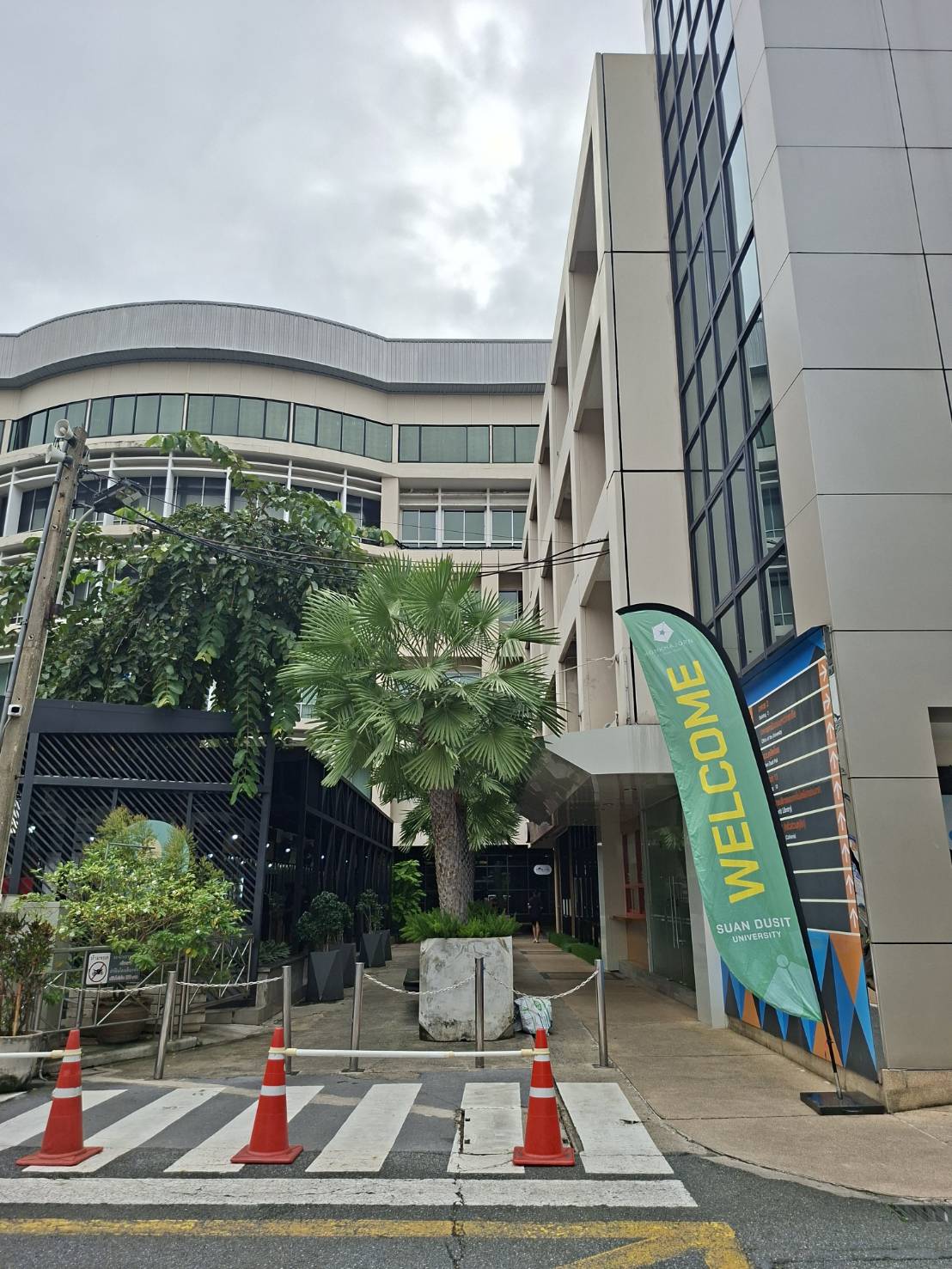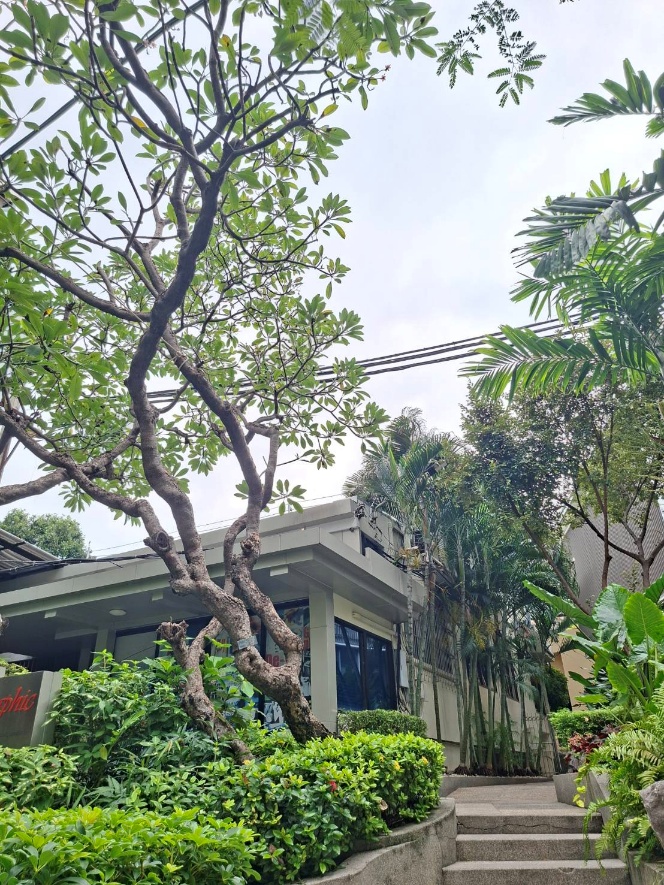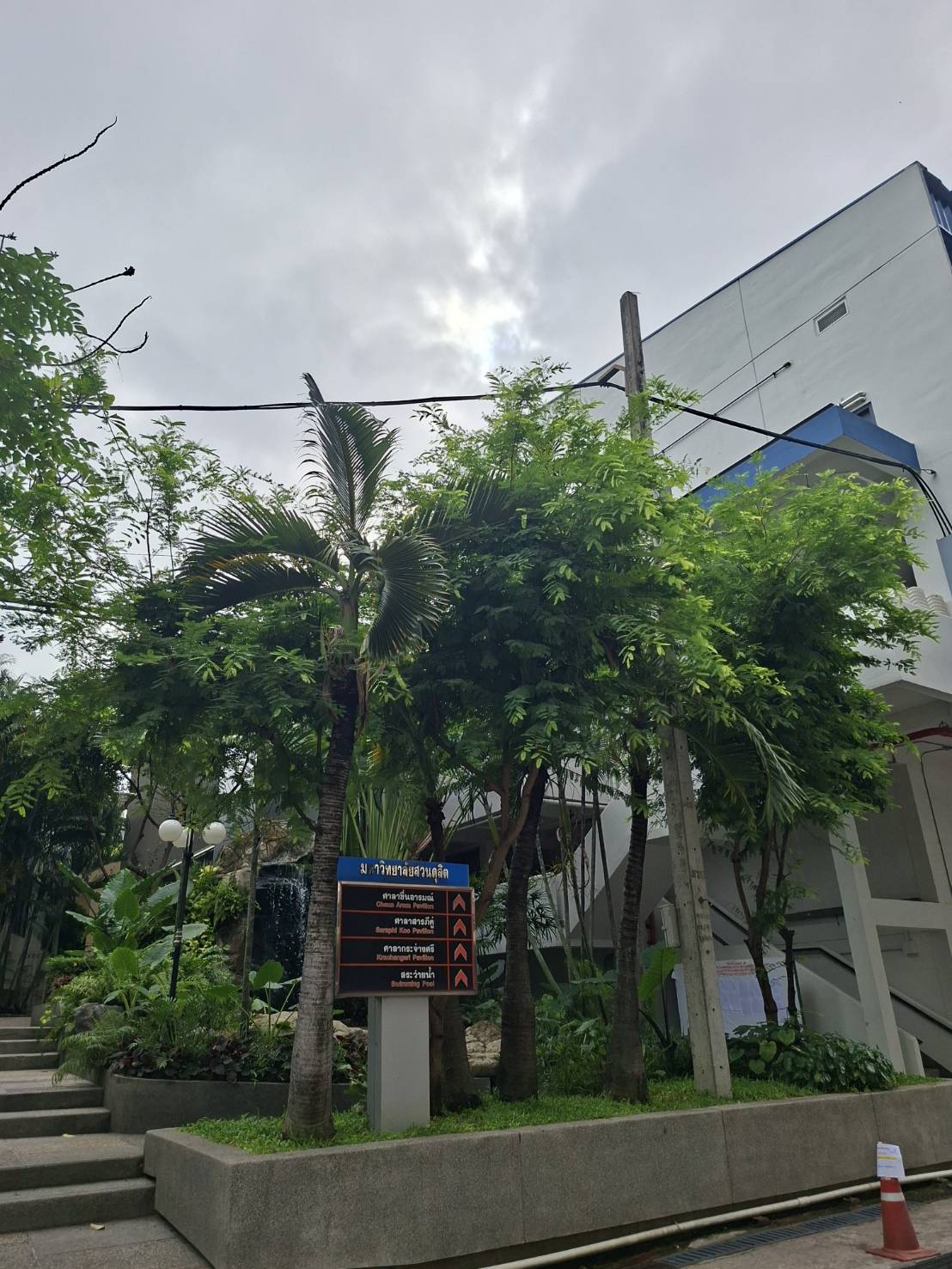Suan Dusit University has implemented landscape design practices that prioritize minimizing water usage, by carefully selecting plant species based on the principles of water-conscious planting. The University emphasizes the use of drought-tolerant plants as the core element of its landscape design—particularly palm species—to reduce outdoor water consumption. This approach is reflected in the presence of two main groups of plant species:
1. Planting for Water Conservation
- Palms:
- Key Species: Areca palm, coconut, and other palm varieties.
- Characteristics: Most plants in this family are highly drought-tolerant and serve as an essential strategy for landscape design to reduce reliance on the main water supply. The extensive planting of palm species across the University grounds stands as concrete evidence of Suan Dusit University’s long-term commitment to water conservation.
- General Resilient Plant Species
- Key Species: Frangipani, Marian plum, Yellow Elder, White Cheesewood, Tamarind, and Mango.
- Characteristics: These tropical plants are drought-tolerant and well-adapted to local climatic conditions. The prominent inclusion of Plumeria (a low-water plant) and Yellow Elder (a drought-resistant flowering species) demonstrates the University’s commitment to integrating low-water species in landscape design for sustainable water conservation.
- Bamboo:
- Key Species: Bambusa and Dendrocalamus species.
- Characteristics: Bamboo is a drought-tolerant plant that thrives in warm climates and is unsuitable for waterlogged conditions. Its use in landscape design represents an effective choice of low to medium water-requirement species, while also serving practical purposes such as natural fencing and visual screening.



2. Plant Species for Water Conservation
Suan Dusit University demonstrates its commitment to water-conscious planting by implementing landscape designs that incorporate a total of 413 trees, categorized into the following main groups:
- General plant species: 289 trees
- Palm group: 82 trees
- Bamboo group (including Bambusa and Dendrocalamus species): 42 trees

In addition, the University has demonstrated a strong commitment to minimizing water usage through the cultivation of Areca palm, Plumeria (Frangipani), Mayongchid (Marian plum), and Yellow Elder (Tecoma stans) — the four dominant plant species on campus. These selections reflect Suan Dusit University’s emphasis on drought-tolerant plants as a core element of its landscape strategy.
Notably, Areca palm and Plumeria together account for 33.33% (67 + 57 = 124 trees out of 413) of all plantings, providing clear evidence of the University’s prioritization of drought-resistant species in landscape planning. Furthermore, the inclusion of Mayongchid and Yellow Elder reinforces the University’s deliberate approach to reducing outdoor water use and lowering dependence on the municipal water supply.
|
Plant Species |
Number (Trees) |
Proportion (%) |
Key Characteristics |
|
1. Betel Nut Palm |
67 |
18.01 |
Drought-tolerant Palm |
|
2. Frangipani |
57 |
15.32 |
Drought-tolerant Succulent |
|
3. Marian Plum |
16 |
4.3 |
Drought-tolerant Fruit Tree |
|
4. Yellow Bell |
15 |
4.03 |
Drought-tolerant Shrub |
Suan Dusit University’s efforts in selecting and cultivating plant species that emphasize drought tolerance and low water consumption demonstrate its commitment to sustainable water resource management, in alignment with SDG 6: Clean Water and Sanitation.
